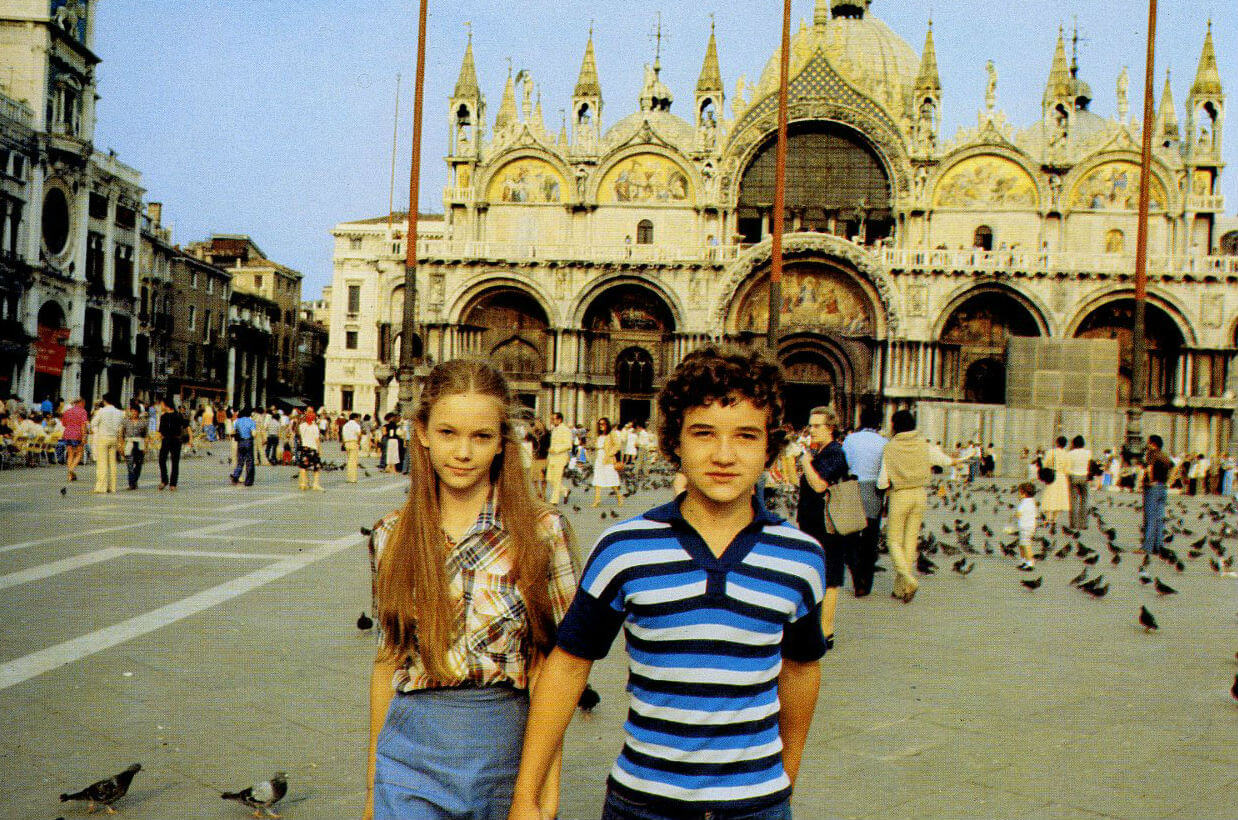A Little Romance [1979] is the simple story of smitten 13 year-olds Lauren (a radiant and coltish Diane Lane) and Daniel (scruffy French actor Thelonious Bernard), who set out on a quest to fulfill a particular romantic ambition: legend has it, when two lovers kiss in a gondola at sunset under Venice’s Bridge of Sighs while the bells of the Campanile toll, their love becomes eternal.
A little prestige. While first-time actors Lane and Bernard do a decent job carrying most of the film, they get to do so with help from the legendary Sir Laurence Olivier. The veteran actor delights as an older French gentleman who crosses paths with the young couple in Paris, adding a sense of timelessness to this sweet little film. Olivier seems to be relishing the light tone of A Little Romance, likely relieved at the end of the seventies not to be playing an ex-Nazi or a Nazi-hunter for once. Also notable is the appearance of David Dukes as a sleazy film director. Dukes is best (or worst?) remembered as the guy who tried to rape Edith Bunker on a very special episode of All In The Family.
A little self-obsession? The presence of a film director named George is interesting, especially since he is not in any way portrayed in a flattering light. In fact, he’s shown as a complete hack, with cinephile Daniel refusing to enter a theater during a crucial chase scene because he cannot bear to watch the awful movie a second time. Meanwhile, George Roy Hill’s own films are treated with shameless reverence – clips of Butch Cassidy and the Sundance Kid and The Sting dubbed into romance languages take up a significant chunk of screen time, and the character of Daniel obsesses over Robert Redford. A film set is shown to be both dull and exciting, a repetitive bore and a forbidden location bustling with activity and potential. There is a brief, strange interlude featuring implied pornography. With such a variety of portrayals, it’s unclear what statement Hill is trying to make about the cinema in general or his own films in particular.
A little beauty. The film showcases a handful of truly picturesque locations across France and Europe. The Chateau de Vaux-le-Vicomte and its exquisite manicured gardens provide a stunning backdrop to a flirtatious conversation, and the roads and tiny towns of rural Italy provide a warm and inviting space for adventure. Some sequences featuring well-known and usually crowded landmarks will leave the viewer wondering exactly how Hill managed the capture the shots that appear in the film. Dreamy and timeless, the Oscar-winning score by George Delerue perfectly fits both the setting and the theme of everlasting love.
A little awkwardness. The amplified emotions one can feel so deeply as a young teenager is on display here, as well as the cringe-worthy obliviousness kids that age can sometimes project: the two main characters casually discuss Heidegger’s philosophy and compare IQs, adorably unaware of their own pretentiousness; Lauren’s dorky friend Natalie has a bedroom that appears to be entirely draped in pink sequins, and features a Snoopy toy so worn and tattered, it’s likely it was once used as a makeshift pacifier. These endearing bits of production design bring a sense of realism to the production and really make the world of the movie feel lived-in.
A little control. Both the main characters are shown to have a difficult home life, and because of this the viewer understands the motivation behind their unusual quest. They are both observant young people fully aware of the faults of their parents. As they strive for control over some element of their own lives, they conjure a sweet, romantic fantasy, which as the film progresses becomes less about affirming their eternal love and starts to feel more like the ultimate expression of their independence.
A little bit magical.

